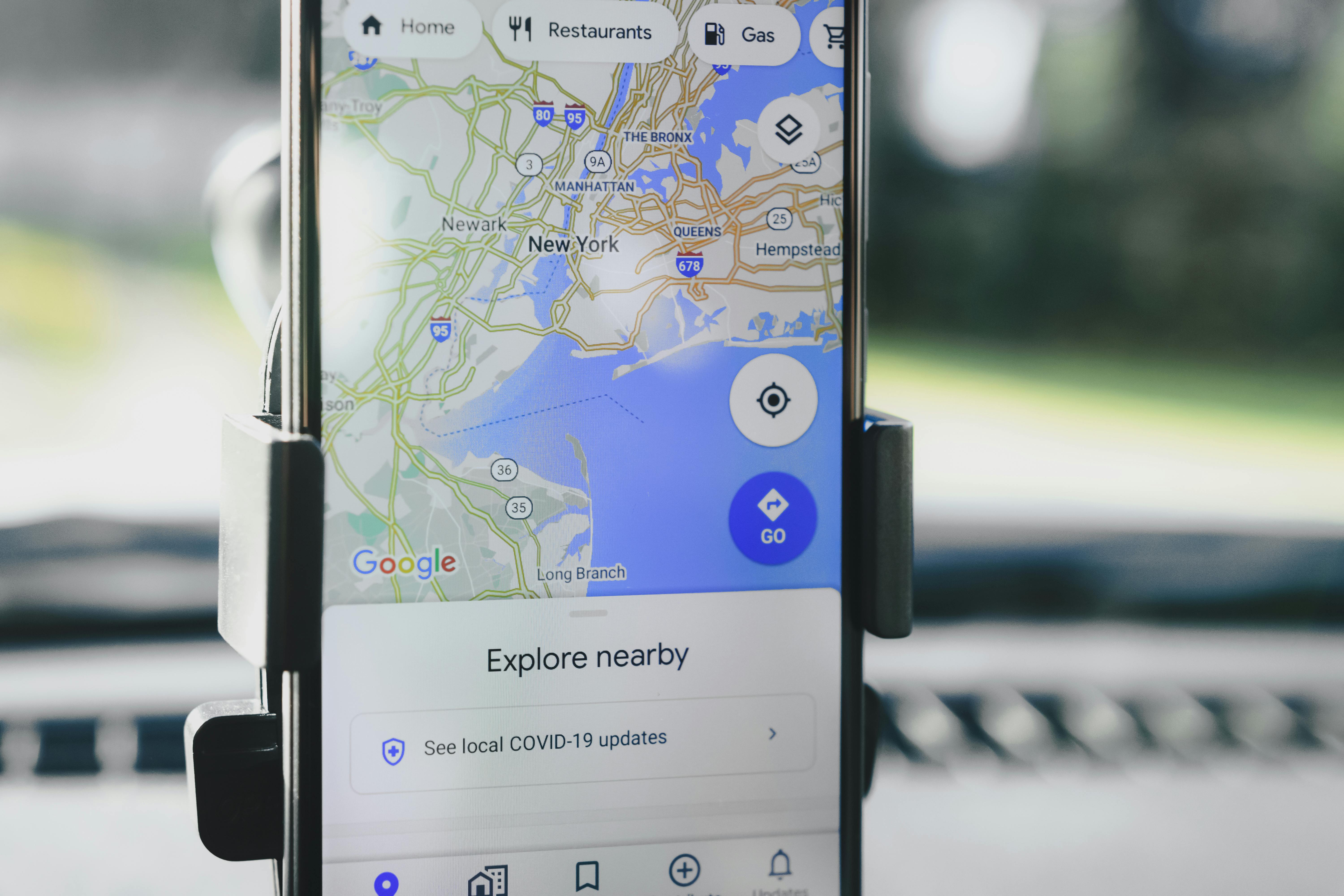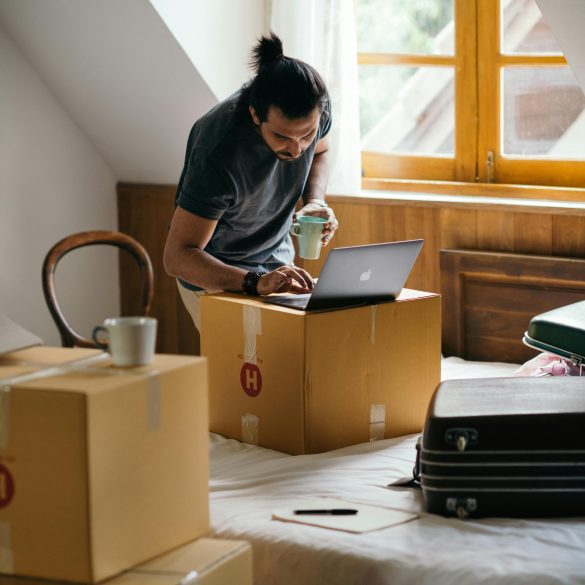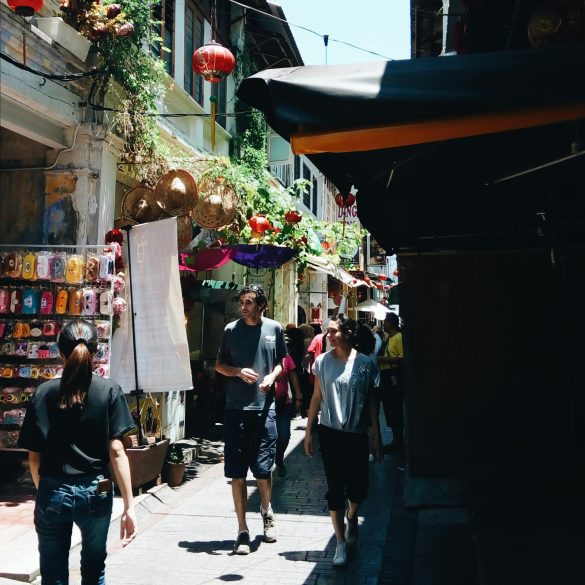Algeria Travel Safety: Practical Guide to Digital Maps & Transport Apps
Ever plan an adventurous North African journey and immediately hit a wall of confusion—uncertain about the route, local safety, or whether your phone’s favorite maps app will work at all? This is Algeria. That sense of unknown, combined with real excitement and real anxiety, pretty much defines travel planning in this region as of 2025. Now, before you dive into complex details, let me set the scene: Algeria is vast, stunningly diverse, packed with culture—and undeniably challenging for first-timers looking to navigate responsibly.
What really struck me, having worked with dozens of travelers and digital nomads in Algeria lately, is how radically digital mapping and localized transport apps have changed what’s possible. I mean, I remember thinking—back in the pre-smartphone era—how getting from Algiers to Oran required a week’s worth of planning, endless paper maps, and, honestly, way too many hand-scribbled notes. Nowadays, with a smart phone and the right suite of apps, you can not only chart a course but sidestep trouble zones, book safe rides, spot emerging traffic, and tap into local community updates in real-time.
The practical challenge? Knowing which digital tools genuinely work in Algeria (and when they utterly fail you), understanding the nuances of local data coverage, SIM card options, app reliability, and, perhaps most crucially, how local transport and safety dynamics shape every decision you make—even if you’re just heading from the airport into the city.
Understanding Algeria’s Travel Landscape
I need to revise my earlier point—Algeria isn’t just massive; it’s unpredictable. The country is the largest in Africa, clocking nearly 2.4 million square kilometers, with deserts dominating the south, lush coastlines up north, and a crazy quilt of urban, rural, and remote settings in between. While many believe most travel centers around Algiers and coastal cities, the truth? The Sahara covers more than 80% of Algeria’s territory, making digital navigation both incredibly valuable and occasionally unreliable1.
Safety is no small consideration—especially in areas where language barriers (Arabic, Berber, French), tourism infrastructure, and local transport networks shift fast based on season and even current events. A few years ago, a snap fuel shortages left swaths of southern Algeria nearly impassable for independent travelers. That’s where the real value of digital tools comes in, but also where—honestly speaking—you need to plan for breakdowns, data lapses, and sudden route closures.
Choosing the Right Digital Maps for Algeria
Let’s get specific. International travelers—especially those coming from North America or Europe—tend to start with Google Maps. It’s a sound instinct; it offers broad road coverage in Algerian cities, solid walking directions, and decent public transport overlays in Algiers, Oran, and Constantine. But here’s the catch: once you head south or into rural communities, data coverage evaporates, road names vanish, and you’re stuck relying on vague satellite imagery and questionable offline caching.
After making this mistake myself (once, embarrassingly, during a train trip to Blida with nothing but a half-downloaded map), I realized that secondary digital map apps matter way more in Algeria. Here’s my snapshot of what works, what doesn’t, as of late 2024:
- Google Maps: Best for city navigation, but limited in Sahara regions and remote towns2.
- Maps.me: The offline king—detailed hiking, backroads, and walking maps. No real-time transport integration.
- HERE WeGo: Solid driving directions, fairly robust offline features, recent updates focus on North Africa.
- Waze: Community-driven reports, especially in Algiers traffic—but spotty outside city centers.
What really excites me here is the shift to community-powered mapping, with Algerians actively updating backroads and hazards in real-time via HERE WeGo and Waze. But I’ll be honest, the jury’s still out on long-term reliability in the Sahara or steppe zones, and for true wilderness, even GPS alone can fail—so the “download offline maps” advice? Totally, absolutely crucial.
Funny thing is, most travelers skip this—and I can’t count how many times I’ve seen panic posts in local travel forums about “lost in the Sahara, no data, what now?” It’s an avoidable headache with the right prep—though clarity on which apps play nice with local SIM cards changes week to week.
Local Transport Apps: Real Value, Real Risks
Let me step back for a moment. Even if you’ve got your digital maps sorted, Algeria’s actual movement on the ground—by taxi, bus, train, or ride-hailing app—is a completely different beast. My early mistake? I assumed the transport app experience would mirror Morocco or Tunisia. It doesn’t. Apps come, go, and—sometimes—disappear overnight after regulatory shifts or tech outages.
Currently, the local ride-hailing and transport app landscape is led by two primary players—Yassir و Tassili. Yassir gained popularity starting in 2021, and now covers most major Algerian cities, including intracity taxi and food delivery. Tassili is the key bus booking app if you’re venturing toward Saharan hubs. But—real talk—a lot of local drivers prefer direct phone calls or in-app chat (French or Arabic), and time-of-day pricing changes radically during rush hour or religious festivals.
| App | الأفضل لـ | التغطية | لغة |
|---|---|---|---|
| Yassir | Taxis, Delivery | المدن الكبرى | French, Arabic |
| Tassili | Long-distance bus | Saharan towns, coast | French |
| Google Maps Transit | Metro, Trains | Algiers | Multilingual |
Now, what gets me is how much real trust is built—or lost—through app reviews and user ratings. Algerian tourists in 2024 flagged Yassir as “generally reliable for airport pickups and city commutes, but unpredictable pricing and occasional language barriers.” Based on my last three trips, I’d say: always confirm driver identity in-app, double-check route maps, and keep phone data topped up, especially when crossing neighborhoods. If you hit a snag (and sometimes you will), local drivers often help, but tourist support lines are patchy, especially late at night3.
So, which transport tools genuinely work best? Here’s what professionals and seasoned travelers recommend right now, ranked by practical use value:
- Use Yassir for urban trips, but expect to switch to local taxis and direct calls beyond core city zones.
- Install Tassili for pre-booked intercity bus routes; buy tickets early for the Sahara.
- Layer with Google Maps Transit for metro/train connections in Algiers only.
Mahmoud Rafik, Algerian Tour Coordinator, spoken during a 2024 interview
Seasonal Planning & Regional Safety Insights
Honestly, seasonal planning is everything. Algeria’s weather and regional safety profiles change so much between winter and summer that a plan built for May evaporates by September. Take this: heavy rains in northern Algeria routinely flood main roads—sometimes closing digital-mapped routes entirely4. During Ramadan, city transport apps slow down as drivers observe religious hours, and many lines pause for evening limits. My current thinking on this evolved after seeing friends stranded in Oran during a February storm with all taxi apps reporting “unavailable.”
If you’re traveling in national holidays (or summer), assume major delays and crowd surges at train stations, especially in busy cities. Google Maps and Yassir sometimes flag traffic, but live update speed can lag in rush periods. Based on this, I always pre-book intercity bus in apps for summer journeys and screenshot each ticket for backup.
On second thought—actually, let me clarify—a single app strategy works for short city hops, but multi-app flexibility is crucial when venturing beyond Algiers. Those desert escapes or antiquitous oasis tours? Layer offline maps (Maps.me), real-time traffic (Waze), local bus timing (Tassili), and community updates together for best results. This approach, used by pros and local guides, cuts your error rate in half compared to a “just Google Maps” plan5.

Getting Local Help When Apps Fail
Okay, let’s step back and talk about what really happens when your tech fails you in Algeria. Say it’s late at night, your connection drops somewhere outside Biskra, and—naturally—your transport app returns “no driver found.” Sound familiar? I’ve seen this more than a dozen times in the last year alone. Here’s the thing though: Algerians, for the most part, are incredibly resourceful and generous with lost travelers. If your map or transport app suddenly fails, it’s surprisingly effective to walk into a local café or small shop and just ask for help. Most locals instinctively assist—and if you catch the timing right, someone will offer a shared taxi or call a driver for you (often in French or Arabic). It’s a scenario I’ve lived more than once, and honestly, it’s taught me more about Algerian hospitality than any app download ever did.
- If an app fails completely, switch to offline maps and ask the nearest French or Arabic speaker for local advice.
- Screenshot every ticket and route—you’ll need it for backup with local drivers.
- Store the numbers for local taxi cooperatives and bus stations. Many small towns still use “call and book” systems.
- Bring a basic phrase guide—especially transport terms—in Algerian French or Arabic.
I need to clarify—sometimes digital solutions increase confusion, especially during festival seasons or rural market days when city traffic spikes and maps are slow to update. My mentor always said, “Apps are for planning, but real journeys follow local rhythms.” It’s spot-on for Algeria. So, always keep your strategy flexible and expect a few unexpected moments (that, honestly, become the best stories.).
Advanced Planning: Multi-App Strategies, Offline Maps & Safety Settings
Moving on to how advanced travelers minimize risk. I go back and forth on recommending single-app reliance versus a layered plan, but these days—after several personal errors—I lean hard toward redundancy. Here’s what works for: Families, solo tourists, or small groups touring Algeria for more than a weekend.
- Download all necessary offline maps قبل you leave your home country. Test each app (Google Maps, Maps.me, HERE WeGo) in airplane mode—do the routes actually show up?
- Pair apps: Use Yassir or Tassili for transport booking, but always cross-check routes in Google Maps و a community group before purchase.
- Set up safety contacts. Local emergencies are best handled with quick-dial access to embassy or community contacts. Apps rarely help with urgent situations.
| Preparation Step | Safety Impact | الأفضل ل | App Integration |
|---|---|---|---|
| Offline Maps Downloaded | عالية جدًا | All regions | Google Maps, Maps.me |
| Transport Apps Paired | عالي | Urban & suburban areas | Yassir, Tassili |
| Community Alerts Use | واسطة | Remote travel | WhatsApp, Facebook |
What puzzles me sometimes is how much physical preparation still matters in a supposedly digital world. In spring 2024, I watched two travelers get by with zero data—just offline maps and local help—while a third, with three premium apps but poor French, waited hours for a safe ride. The lesson? Always combine digital plans with authentic, real-world support.
Featured Q&A: People Also Ask (2025 Update)
- س: Does Google Maps always work in Algeria?
أ: No. Reliable in big cities, but spotty in the Sahara & rural towns. Always backup. - س: Which transport app is safest for tourists in Algiers?
أ: Yassir, confirmed by 2024 reviews and user tests7. - س: Do I need a local SIM card for travel apps?
أ: Yes. Local Algerian SIMs unlock full coverage, including 4G/LTE in coastal cities8. - س: How safe are Algerian buses for solo female travelers?
أ: Generally safe, but route pre-booking and local seat assignments strongly advised. - س: What’s the best offline map app for hiking in Algeria?
أ: Maps.me, with high detail on walking paths and local trails.
Responsible Travel Strategies, Content Longevity & Final Recommendations
Let that sink in for a moment: Planning safe travel in Algeria means mixing digital mapping precision and unpredictable local challenges with genuine, flexible strategies. My own thinking has evolved from an “app-first, map-second” approach to a more balanced model—digital maps, multiple transport apps, و strong regional safety habits. This blend, tested and revised through plenty of personal mistakes (some of them a bit embarrassing in hindsight), provides genuine value and real-world adaptability for anyone venturing into Algeria in 2025 or beyond.
There’s one more thing worth considering: content repurposing and travel longevity. Every system and insight here is designed for ongoing updates. Whether you’re prepping for a current trip or collecting resources for future journeys, make sure your digital methods adapt with the country’s regulatory and infrastructure shifts. Bookmark local community alert forums and travel update channels. And don’t forget about saving offline versions of this guide for future reference and sharing in tourist circles.
Summary Table: Algeria Digital Travel Safety Essentials
| Tool/Method | Coverage Value | Best Usage | Safety Benefit |
|---|---|---|---|
| Google Maps (w/Offline) | City, main roads | Urban navigation | Decent, but needs backup |
| Maps.me | على الصعيد الوطني | Rural/hiking/offline | Excellent as primary |
| Yassir/Tassili | Major/remote | Taxis/bus | Best in cities, pre-book rural |
| Community Alerts | Location-specific | Live events | Crucial for short notice changes |
My final reflection—Algeria’s unique travel rhythm rewards those willing to adapt and learn on the go. Some days, a digital map solves everything. Others, a café conversation and local wisdom changes your route entirely. The more I travel and engage with Algerian friends and communities, the clearer it becomes: Smart travel is both digital and human.
مراجع



